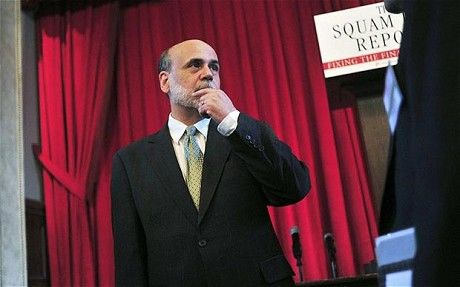
More than $75bn of the total, which it hands over to the Treasury, came from income generated by its holdings of Treasury bonds, mortgage-backed securities and debt issued by Fannie Mae and Freddie Mac.
The 65pc jump in profits compared with 2009 comes as the Fed's quantitative easing (QE) programme has pushed the size of its balance sheet to almost $2.5 trillion. After the first round of QE in March of last year, the Fed embarked on controversial second round in November designed to boost the US economy's stuttering recovery. Critics say QE is the wrong policy to try to cut unemployment with, and it risks sparking inflation as more money chases investments.
Experts cautioned that while the Fed's vast holding of debt has so far generated the gains for US taxpayers, the risk remains that the assets could lose their value.
Ben Bernanke, Fed chairman acknowledged the risks when testifying to the Senate last week. "Should short-term interest rates rise, which of course could happen if the economy recovers and we need to normalise monetary policy, then those remittances could do down."



Reader Comments
to our Newsletter